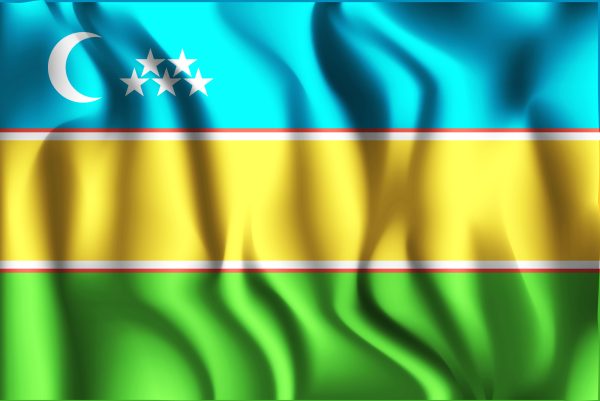
Large protests are rare in Uzbekistan, making this summer’s rallies in Karakalpakstan in response to proposed constitutional changes regarding the autonomous region’s status exceptional and surprising. The protests and the aftermath shed light on what has changed in Uzbekistan and what has not.
In a new report, Human Rights Watch said Uzbek security forces “unjustifiably” used lethal force to disperse generally peaceful demonstrators on July 1 and 2 in Karakalpakstan.
According to the human rights group’s analysis of videos and photographs from the protests and the aftermath, Uzbek police used hand-thrown grenades and heavier projected grenades against protesters, causing serious wounds. Human Rights Watch also said it found some evidence of the use of live ammunition by police.
At least 21 people died, according to official figures, including four law enforcement officers. More than 270 people were injured.
“Uzbekistan owes it to the victims to properly investigate how this happened and to hold accountable those responsible for serious violations,” said Hugh Williamson, Europe and Central Asia director at Human Rights Watch.
In the wake of the protests, on July 2 President Shavkat Mirziyoyev arrived in the region and announced the withdrawal of the proposed changes to Karakalpakstan’s status in Uzbek Constitution.
In the months since, Tashkent’s constitutional referendum plans have stalled out. The public comment period on the draft amendments was extended twice and ended on August 1. Little was said thereafter about the referendum. And then, during an October 7 visit to the Sirdaryo Region, Mirziyoyev commented that the relevant parliamentary committees were working on the public’s proposals. “In order to create a perfect, truly people’s Constitution, which will become an expression of the aspirations of the people, I suggest not to rush,” he said.
Meanwhile, back in Karakalpakstan the authorities detained hundreds. Human Rights Watch cites official figures of 516 people detained as of July 4 but notes that “[t]here is no updated official information regarding the total number of people still in detention.” On July 8 the Prosecutor General’s Office announced that it had initiated a criminal case under article 159 of the Criminal Code of Uzbekistan regarding alleged mass riots in Karakalpakstan. Daulet Tazhimuratov, a prominent Karakalpak lawyer and journalist whose initial detention on July 1 triggered the swelling of the protests, was arrested again, along with 13 others. There has also been no update from the authorities since then regarding the investigation. At least four more Karakalpak activists have reportedly been detained in neighboring Kazakhstan, presumably at the request of Uzbek authorities, and are at risk of extradition to Uzbekistan.
At least 107 of those detained during and after the protests have been released from detention to their families, though it is unclear if and what charges may still be pending against them.
In the aftermath of the protests and crackdown, Uzbekistan’s parliament established a commission to investigate the incident. The commission, on one hand, has publicized its meeting with variety of people, from hospitalized protesters to security force officers, as well as protest participants, civil society representatives, and Karakalpakstan residents. Human Rights Watch called the commission “an important step by the authorities.”
But, Human Rights Watch notes, “There has been limited transparency about the scope of the commission’s work and its mandate, and the intended outcome of the investigation.” The commission, headed by the Uzbek human rights ombudswoman, Feruza Eshmatova, is largely comprised of government officials, politicians, and those close to the government. Human Rights Watch says, it is “unrealistic to expect the commission to present genuinely independent findings, especially with respect to the actions of police and security forces.”
There is no evidence, the human rights group said, that the commission is investigating the actions, and consequences in injuries and deaths, of the security forces. Instead, its work appears to have focused on the protests and protesters.
In the immediate aftermath of the protests, Mirziyoyev alleged that foreign forces orchestrated the protests. No evidence has been presented to support that claim.
Human Rights Watch concludes its report with a reminder of international standards when it comes to the freedom of assembly and the use of force. “Governments are obliged, under international law, to protect the right to freedom of peaceful assembly,” the report states. It then goes on to remind that, “Assemblies are often diverse gatherings, and participants do not lose their individual rights solely because a small number of people are behaving violently.”
Government responses to protests ought to be “necessary and proportionate” and the use of force limited. “Lethal force should never be indiscriminately directed at crowds and should only be used in case of imminent threat to life,” the rights group notes.
Rights Group Highlights Police Abuse in Karakalpakstan Crackdown
Source: Frappler

0 Comments